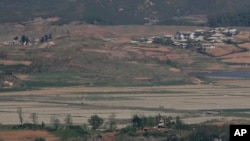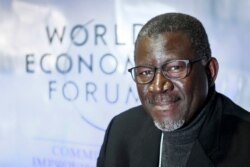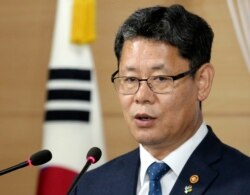Christy Lee of VOA's Korean Service contributed to this report.
WASHINGTON — North Korea, buffeted by the worst drought in more than 35 years and anticipating summer flooding, faces deepening food shortages, even as the regime spends millions of dollars to skirt international sanctions in order to expand its nuclear weapons program.
The International Federation of Red Cross and Red Crescent Societies (IFRC) told VOA’s Korean Service that the humanitarian situation in North Korea is “concerning” as it is monitoring “the ongoing drought and its impact on the already precarious food security situation.”
The head of IFRC, Secretary General Elhadj As Sy, visited North Korea July 22-25 to assess the country’s humanitarian needs.
“We are concerned about the potential impact of the approaching flood season,” an IFRC official told VOA’s Korean Service Thursday. “We are now seeing the multiple effects of the drought such as mal- and undernutrition as well as a rise in water borne diseases, including diarrhea.”
The seasonal threats of drought and floods have long threatened North Korea’s food supplies and triggered many humanitarian crises.
A famine in the 1990s is believed to have killed nearly 2 million people. In August 2018, severe rainfall caused heavy flooding throughout the country, reportedly displacing tens of thousands of people and leaving close to 100 dead. The flood washed away crops nearing harvest, leading to food shortages, and destroyed the water supply system, depriving people of safe drinking water.
In May this year, North Korea’s recorded rainfall in the first five months of 2019 was the lowest since 1982, according to the official Korean Central News Agency (KCNA).
The U.N.’s World Food Program (WFP) estimated about 10 million people are facing severe food shortages this year after the country’s worst harvest in a decade last fall.
The government cut daily state rations to less than 11 ounces per person in January, compared with 13.4 ounces in 2018, the World Food Program and the Food and Agriculture Organization said in a joint assessment. And today, about 770,000 malnourished women and children are being fed by the WFP.
Despite the food shortages, Pyongyang told the WFP in July that it would not accept the aid Seoul offered through the U.N. humanitarian agency, citing the military drills South Korea jointly holds with the U.S. in August. North Korea views the exercises as a rehearsal for invasion.
In June, South Korea offered to help North Korea facing food shortages and planned to provide 50,000 tons of food. Seoul said it is waiting for a final decision from Pyongyang as the WFP is talking with the North.
North Korea tested five rounds of missile in less than two weeks with the latest launch occurring Friday, in an apparent show of protest against the joint drills that began Monday.
Intelligence analysts think North Korea has expanded its nuclear and missile programs after detecting movements of containers and trucks at its weapons facilities through satellite images, according to The Wall Street Journal, which first reported on the country’s accelerated programs. The reports came out as Pyongyang launched two missiles July 25.
Analysts at the U.S. Defense Intelligence Agency said North Korea could have expanded its nuclear weapons by 12 bombs since President Donald Trump and North Korean leader Kim Jong Un held their Singapore Summit in June 2018, The Wall Street Journal reported.
To fund its nuclear weapons program, Pyongyang generated about $2 billion through cyberattacks by stealing from banks and cryptocurrency exchanges, according to Reuters, citing a confidential unreleased U.N. report it obtained this week.
North Korea also reportedly made hundreds of millions of dollars using Chinese front companies and banks to evade sanctions. Federal prosecutors are investigating three big Chinese banks suspected of helping North Korea make financial transactions to fund its nuclear program.
According to a report released in July by the Center for Advanced Defense Studies (C4ADS), a Washington-based think tank, North Korea continues to import millions of dollars’ worth of luxury goods, including more than 800 luxury vehicles. Among them were two armored Mercedes-Maybach S600s that cost $500,000 each.
North Korean leader Kim was believed to be in what appeared to be a Mercedes-Maybach Pullman Guard armored limousine that costs $1.57 million during his first summit with South Korean President Moon Jae-in last year.
The U.N. Security Council imposed sanctions on North Korea in 2006, banning luxury goods imports. North Korea has been evading U.N. sanctions, especially those imposed since 2016 banning the country’s key exports, including coal and sea food, and importing fuel, through illicit shipping practices.









